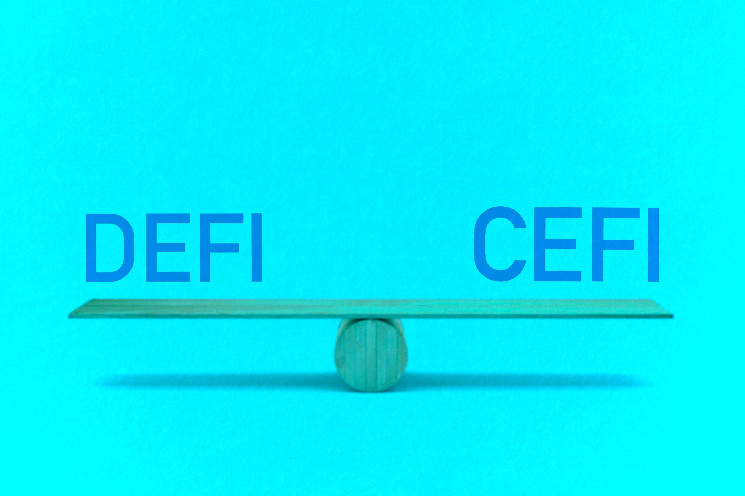CeFi Broke. But DeFi Is Not Without Blame

There’s a hopeful meme going around crypto circles in the wake of the recent crypto meltdown.
Here’s Bankless writer Donovan Choy’s version in the headline of a newsletter column that tells us “CeFi Broke. DeFi Didn’t.” Here’s Pantera Capital CEO and founder Dan Morehead declaring that “DeFi worked great” as he takes a Wall Street Journal reporter to task for erroneously lumping the struggling centralized finance lenders Celsius, BlockFi and Voyager Digital into the decentralized finance camp. And here’s ShapesShift founder Erik Voorhees explaining that although we saw DeFi “prices falling,” there were few signs of “systems breaking.” You’re reading Money Reimagined, a weekly look at the technological, economic and social events and trends that are redefining our relationship with money and transforming the global financial system. Subscribe to get the full newsletter here.
Like much of what counts for debate in this industry, this take is partially correct but also misleading.
Yes, the centralized structure of the failed lenders was a key part of those various CeFi lenders’ undoing. They had rehypothecated the assets that customers had deposited with them – taking custody in the process – creating a mass of IOUs that could not be met once the value of those re-invested loans dropped and all that leverage had to be unwound.
By contrast, people who lent tokens to DeFi projects such as Maker and Aave were – for the most part – protected by smart contracts that automatically redeemed the loans or collateral when needed. As Bankless co-founder Ryan Sean Adams pointed out, the reason why CeFi projects are not collapsing is because “the code is forcing them to pay back their loans. Not laws. Not attorneys. Not courts.”
But the linkages between DeFi and CeFi’s failures are much tighter than this narrative lets on. It’s not only that Terra, the failure that started it all, was a DeFi project. It’s also not just that, for DeFi users, the collapse in DeFi token prices amounts to more or less the same thing as losses from loan defaults, or that billions of dollars have been lost in scams and “rug pulls” engineered by DeFi founders.
The real problem is the interrelationship among the inflated yields that DeFi projects were offering, the unsustainable “number go up” expectations for token prices on which those yields were based and the entire interconnected complex of CeFi and DeFi speculation that emerged out of all of that.
Fixing the entire system
DeFi has much to offer the world of finance. That DeFi smart contracts worked as promised in these highly stressed market conditions to keep intact the “systems” – if not the prices – is a good proof of concept on which to build a more robust, viable system. When you remember how, in scandal after scandal, Wall Street’s centralized intermediaries have bilked the global financial system for more than a century, it’s easy to see benefits of markets, rather than opaque gatekeepers, setting prices and rates.
But as it’s currently designed, DeFi is highly volatile and prone to all sorts of manipulation. In the first quarter of 2022, before the worst of the market collapse, $1.3 billion was lost to scams and hacks across Web3, according to a report from Immunefi, a bug bounty and security provider for DeFi services.
It doesn’t matter how decentralized the model for asset custody and loan repayment is – if a project’s code has vulnerabilities that attackers can exploit or if the price of the underlying tokens is prone to dropping precipitously in short periods of time, it’s hardly viable as a competitor to the existing system.
Read more: Michael Casey — LTCM and Other History Lessons for Crypto
Work is needed, in other words, to bring security and stability to DeFi.
As we discussed last week, it could do with some real-world, return-generating use cases so that yields are founded on something concrete rather than the arbitrage opportunities created by speculation and outsized upward price projections. And as we discussed three weeks ago, it’s time to work out a viable regulatory framework that would include both official regulation and self-regulation in ways that don’t undermine the benefits of decentralization.
DeFi’s outperformance over CeFi during the market’s massive leverage unwind offers a welcome building block with which to design a more secure system of regulation and investor protection.
Where there is deemed to be a truly decentralized control, that system should focus on code audits, bug bounties and rigorous testing rather than impose compliance on leaders who have given up control over their systems.
For CeFi players, we should call them as they are and demand the same degree of regulation that’s applied to established intermediaries in traditional finance.
The interrelationship between these different realms needs to be understood if the entire system is to work. Dismissing one and focusing on the other will leave crypto finance projects vulnerable to repeats of the recent ugly episodes.







 Bitcoin
Bitcoin  Ethereum
Ethereum  Tether
Tether  USDC
USDC  Dogecoin
Dogecoin  Cardano
Cardano  TRON
TRON  Bitcoin Cash
Bitcoin Cash  Chainlink
Chainlink  Polygon
Polygon  Litecoin
Litecoin  LEO Token
LEO Token  Dai
Dai  Hedera
Hedera  Stacks
Stacks  Ethereum Classic
Ethereum Classic  Cronos
Cronos  Stellar
Stellar  Cosmos Hub
Cosmos Hub  OKB
OKB  Maker
Maker  Theta Network
Theta Network  Monero
Monero  Algorand
Algorand  NEO
NEO  Gate
Gate  Tezos
Tezos  EOS
EOS  KuCoin
KuCoin  Synthetix Network
Synthetix Network  IOTA
IOTA  Bitcoin Gold
Bitcoin Gold  Tether Gold
Tether Gold  TrueUSD
TrueUSD  Enjin Coin
Enjin Coin  Zilliqa
Zilliqa  Holo
Holo  Ravencoin
Ravencoin  Siacoin
Siacoin  0x Protocol
0x Protocol  Qtum
Qtum  Basic Attention
Basic Attention  Ontology
Ontology  Decred
Decred  Dash
Dash  NEM
NEM  Zcash
Zcash  Lisk
Lisk  Waves
Waves  DigiByte
DigiByte  Numeraire
Numeraire  Status
Status  Nano
Nano  Hive
Hive  Pax Dollar
Pax Dollar  Steem
Steem  Huobi
Huobi  OMG Network
OMG Network  BUSD
BUSD  Ren
Ren  Bytom
Bytom  Bitcoin Diamond
Bitcoin Diamond  HUSD
HUSD  Kyber Network Crystal Legacy
Kyber Network Crystal Legacy  Energi
Energi  Augur
Augur